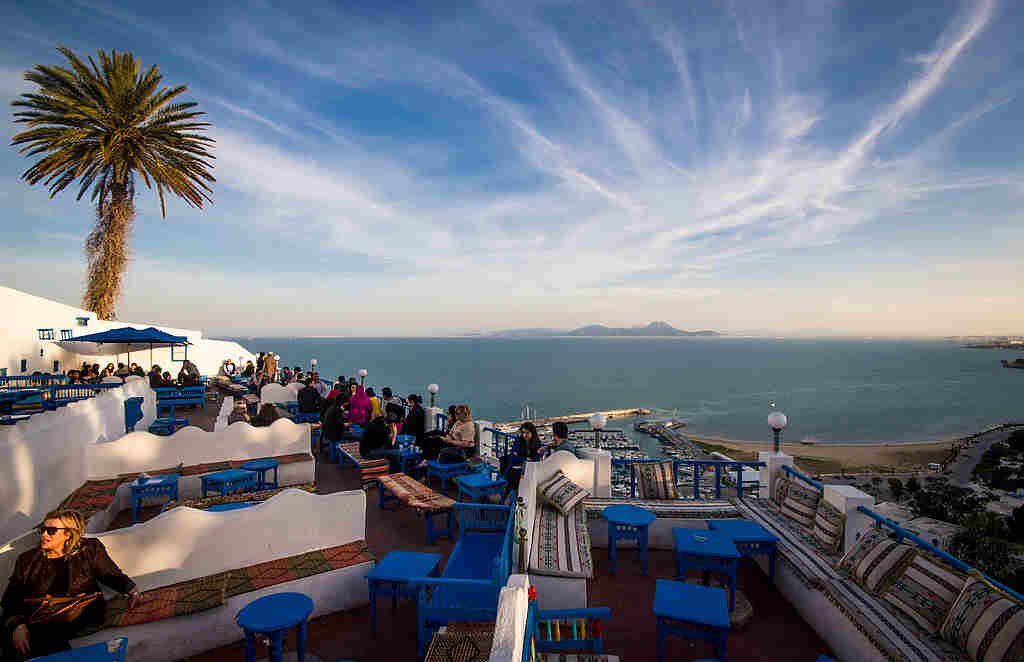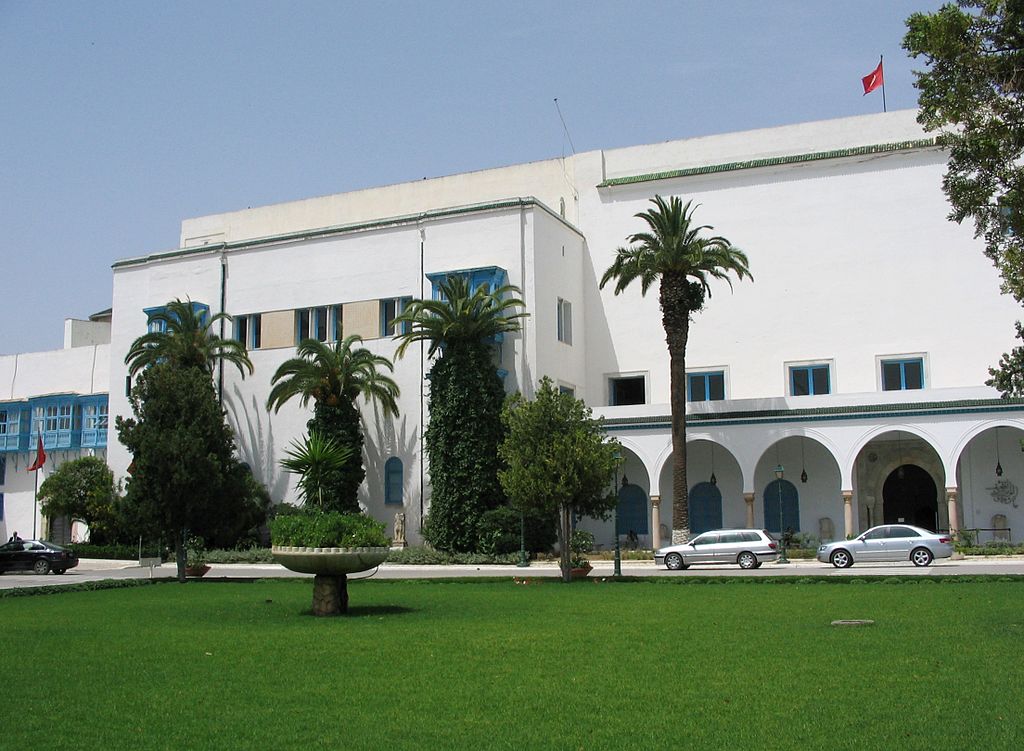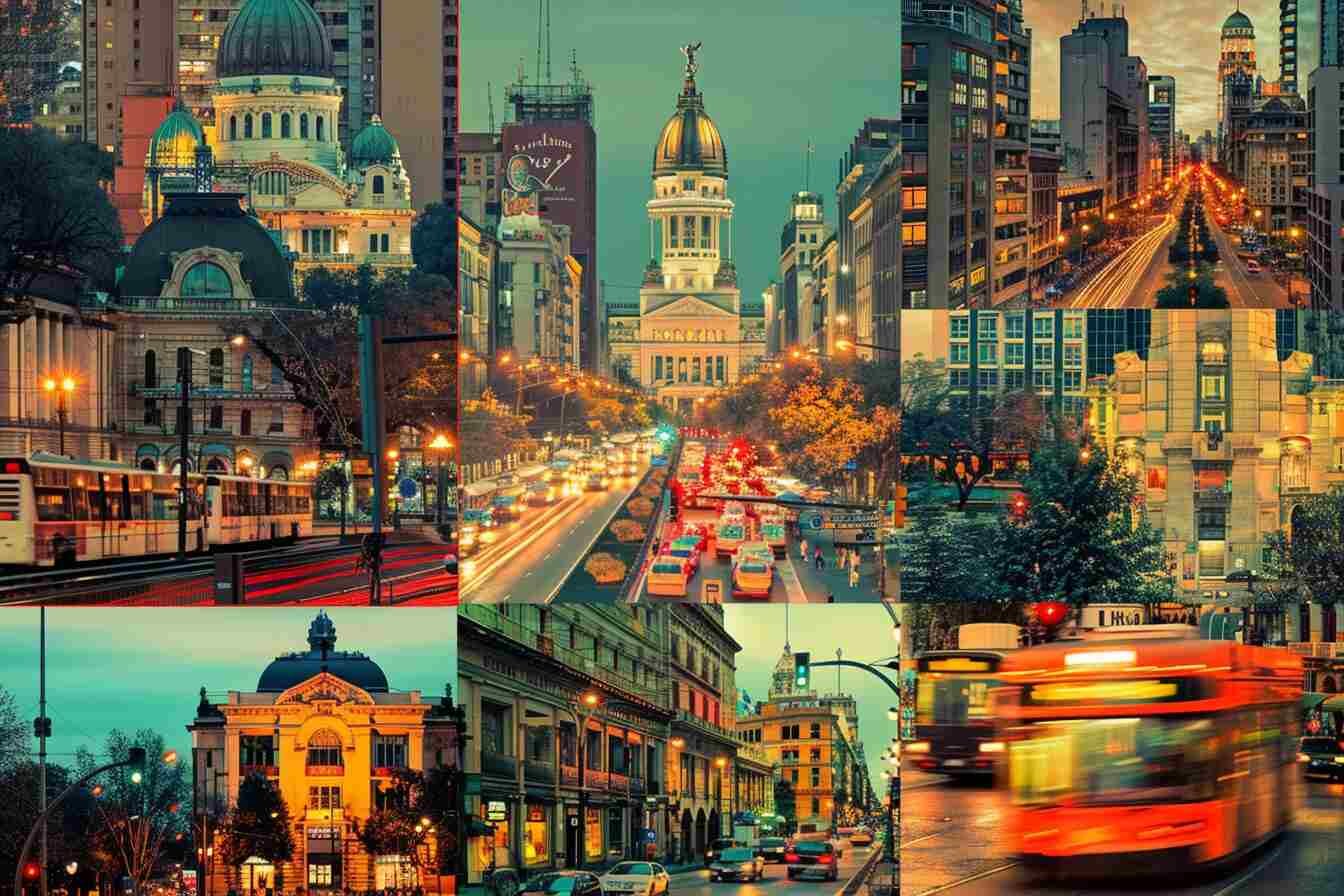Must See Places in Tunis
Are you going to Tunisia, but you don’t know what to do in Tunis? This city has so much to offer that it will be difficult for you to choose the places to see.
Over the centuries, the territory of present-day Tunisia has successively been under Carthaginian, Numidian, Roman, Byzantine, Vandal, Umayyad, Aghlabid, Fatimid, Norman Sicilian, Almohad, Hafsid, Ottoman and French influence.
These circumstances, as well as Tunisia’s position at the intersection between the Mediterranean Basin, Europe and Africa, have influenced the country’s cultural diversity.
This is why we have selected for you the essential excursions to make in Tunis and beyond. Feel free to save this article or even prepare any circuits you want to visit, so you don’t miss anything during your stay in Tunis!

Photomontage of Tunis. ELEL09, assemblage et montage, CC BY-SA 3.0, via Wikimedia Commons
Montage of various photos of Tunis (Tunisia) including the following elements:
- The kasbah (in front of the seat of the municipality) – Tunis (Tunisia)
- The Melikit minaret of the Zitouna mosque
- Obelisk of the Place du 14 Janvier, formerly Place du 7 Novembre
- Tunis’ Avenue Habib Bourguiba looking north towards the port of Tunis (La Goulette) and the Mediterranean Sea
- Facade of Sadiki College
- Bab Bahr, the French Gate
- Radès-La Goulette bridge
- Planetarium of the City of Sciences of Tunis
- Radès Stadium
- Statue of Ibn Khaldoun on Independence Square
- Headquarters of the Municipality of Tunis
1. Visit the Bardo Museum
During your stay in Tunis, a visit to the Bardo Museum will be a must if you want to know more about Tunisian and African culture. Indeed, it is the second African museum to be able to offer you such a wealth of archaeological pieces. It is full of relics that testify to the past of the country and the continent.
Bardo National Museum. Giorces, CC BY 2.5, via Wikimedia Commons
You will find one of the largest and most beautiful collections of mosaics from the Roman era. You will also admire at the same time the typically Tunisian palace which houses this museum. Plan, if you wish, to book a guided tour so that no secret of this rich heritage escapes you.
.

Bardo Museum Hall. Sinda BF, CC BY-SA 4.0, via Wikimedia Commons
2. Getting to Carthage
Carthage is a Tunisian city located north of Tunis. It houses the presidential palace and other buildings of wealthy Tunisians or expatriates. Carthage is reputed to be a very posh city. Do not hesitate to stroll through its alleys, both modern and historic.
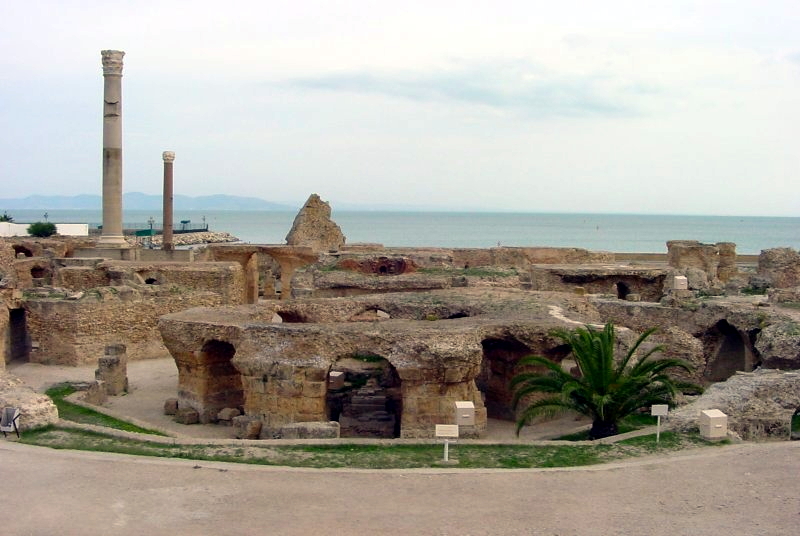
Ruins of Carthage. Patrick Verdier, Free On Line Photos, Copyrighted free use, via Wikimedia Commons
Indeed, the city is built on ancient ruins which give it all its charm. Carthage was destroyed in 146 BC by the Romans, then rebuilt by themselves once their battle was won over the Carthaginians. The story of a city that will not fail to surprise you! Carthage is listed as a UNESCO World Heritage Site, as is its neighboring village Sidi Bou Said.
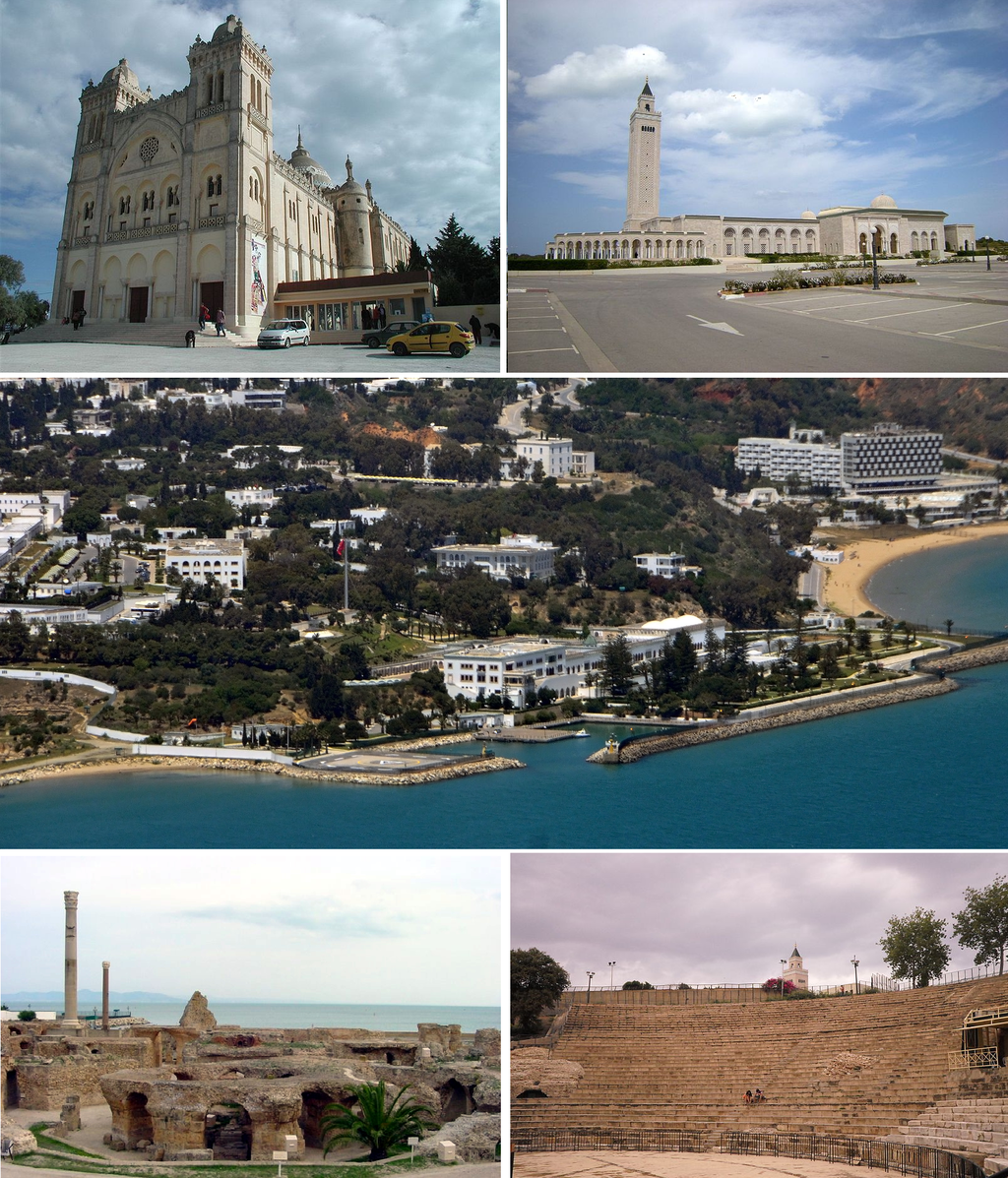
Photo montage of the city of Carthage. ELEL09, montage, CC BY-SA 3.0, via Wikimedia Commons
3. Stroll in Sidi Bou Said
Sidi Bou Said is a village located about 20 km (12.4 miles) northeast of Tunis (around 30 minutes drive from Tunis city center). It nestles on the cliffs overlooking the Mediterranean Sea, Carthage and the Gulf of Tunis. It is a colorful village, nicknamed the “white and blue paradise”.
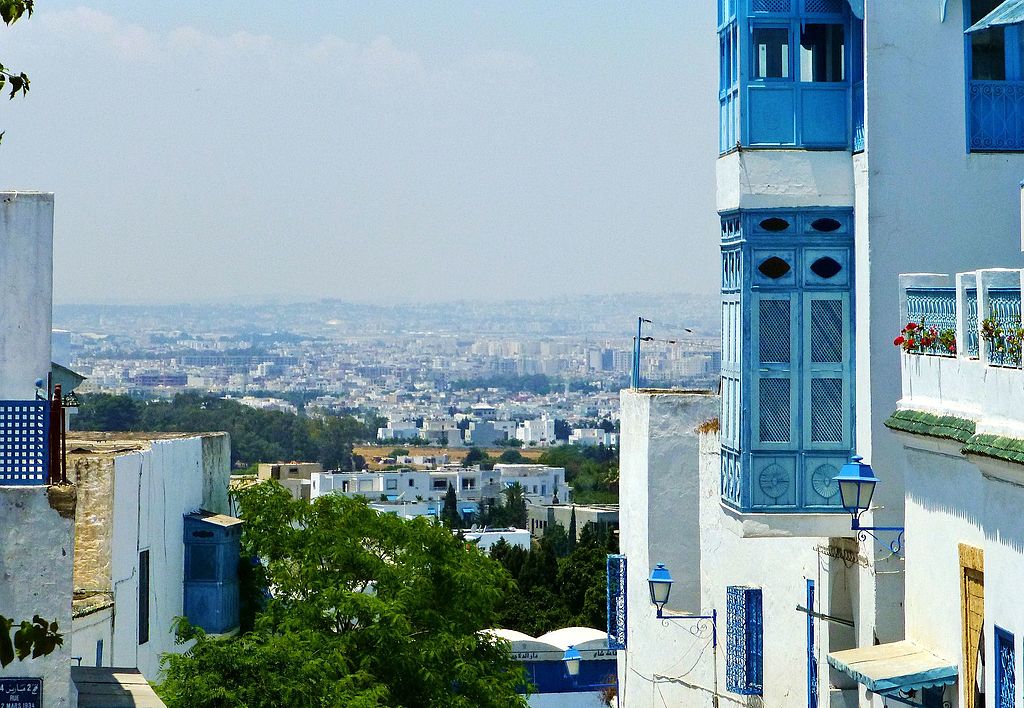
Sidi Bou Said, the village of history and culture. Mietek Ł, CC BY-SA 3.0, via Wikimedia Commons
Visiting Sidi Bou Saïd will be sporty if you decide to walk through its winding streets. You will still discover Arab architecture mixed with Andalusian, quite spectacular! Indeed, the houses are almost all bright white and royal blue, typical Mediterranean colors. Do not miss to admire the view that will be offered to you from the top of the village!

Sidi Bou Said is a town in northern Tunisia located about 20 km from the capital, Tunis.
Named for a religious figure who lived there, Abou Said ibn Khalef ibn Yahia Al-Tamimi Al-Baji | Abou Said ibn Khalef ibn Yahia al-Tamimi al-Baji (previously it was called Jabal el-Menar). The town itself is a tourist attraction and is known for its extensive use of blue and white. © Rene Cortin (CC BY-SA 4.0) / Wikimedia Commons
4. Admire the Gulf from the Café des Délices
Café des Délices is located on the edge of the cliff overlooking the Gulf of Tunis in Sidi Bou Said. This café opened its doors in 1960. It is arranged in several terraces, allowing you to relax while admiring a sumptuous landscape. It is also called Café de Sidi Chaabane because it was built around the tomb of the Saint of the same name.
This place has a great reputation thanks to the famous song by Patrick Bruel, simply titled “Le Café des Délices”. You can enjoy a delicious mint tea, a typical Arabic flavor.

Cafe Delices in Tunis. Mietek Ł, CC BY-SA 3.0, via Wikimedia Commons
5. Discover the Bayram Palace
Now one of the most luxurious hotels in Tunis, the Bayram Palace was the final resting place of the Grand Ottoman Muftis. It is located in the heart of the historic medina. If you wish, during your stay in Tunis, to immerse yourself in the culture of this country, this is without hesitation the place where you will have to go. Indeed, the Palace shows a typical architecture of the old days. You will discover its original decorations, its marbles, earthenware and other historical vestiges. The Palace has two splendid gardens, in which you can bask in golden silence. A Spa is also available to customers. You can let yourself be tempted by a hammam with real eucalyptus essences.
6. Explore the Medina
A UNESCO World Heritage Site since 1979, the medina of Tunis is the heart of the city. It is certain, it will take you several hours, even days to successfully explore the entire medina. You can discover many historical monuments, such as mosques including the most famous “The Great Mosque of Tunis” also called “Zitouna Mosque”.

Medina old Town of Tunis. IssamBarhoumi, CC BY-SA 3.0, via Wikimedia Commons
You will also see palaces, mausoleums, medersas (high schools) and fountains. You will also have to go to the Kasbah, seat of the government but also an exceptional architectural work. Of course, it is in the medina that you will find all the souks and its traders ready to haggle over everything you find there.
7. Go to the Zitouna Mosque
The Zitouna Mosque is the Great Mosque of Tunis, it is also called the Olive Tree Mosque. It sits enthroned in the middle of the medina. Majestic, you will not be able to prevent yourself from visiting it. The mosque is spread over approximately 5,000 square meters and has nine main entrances. There are no less than 184 columns outside, but also inside, making this old building an architectural splendor. Do not hesitate to be guided to visit the interior of the Mosque! For women, wearing the veil is highly recommended to enter this place of worship highly respected by Tunisians.

Ez Zitouna Mosque. Leandro Neumann Ciuffo, CC BY 2.0, via Wikimedia Commons
8. Markets not to be missed in Tunis: the souks of Tunis, the markets of the medina
The souks of Tunis are mostly grouped together in the heart of the medina; these are an absolutely essential visit to the capital.
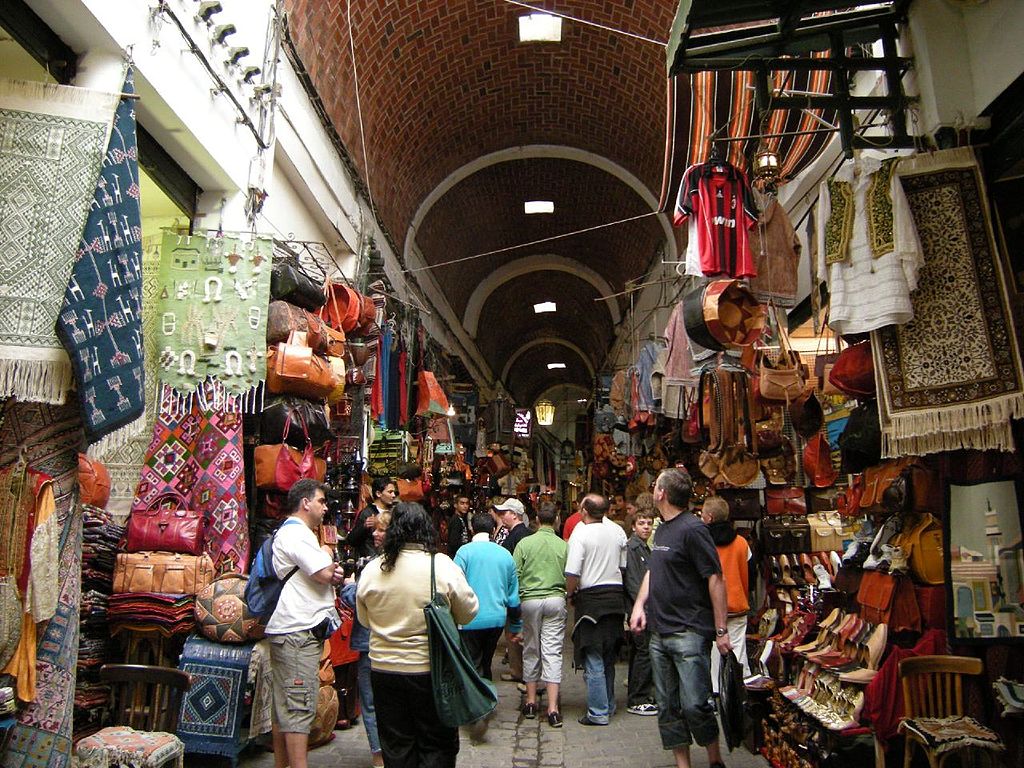
Souk el Trouk, one of the souks of the medina of Tunis. It is specialized in clothing and embroidery trading. Located at the intersection of the Sidi Ben Arous and Tourbet El Bey streets, next to the Youssef Dey Mosque. Leandro Neumann Ciuffo, CC BY 2.0, via Wikimedia Commons
Among the souks of Tunis not to be missed, we note:
- The souk el-Trouk, the old souk reserved for Turkish craftsmen; there are mainly trinkets and souvenirs in a colorful ensemble: it starts from the Youssef Dey mosque, towards the great mosque.
- The souk El-Attarine, its extension, runs along the great mosque on the north side, there are mainly perfumes.
- The El-Koumach souk is also called the souk of fabrics: it borders the great mosque on the west side and continues with the Women’s souk then the Goldsmiths’ souk to the south.
- Souk El-Leffa, which intersects with Souk El-Koumach, is devoted to carpet making.
- The El-Belat souk offers large displays supplied with many spices. All these souks are therefore located near the great mosque, and it is easy to spend several hours strolling from stall to stall…
Souk El Attarine. Located in the heart of the old town, facing the Zaituna Mosque. Selma Jmii, CC BY-SA 4.0, via Wikimedia Commons
9. Saint Vincent de Paul Cathedral
In the New Town of Tunis is this imposing cathedral, the largest surviving building from the French colonial period in Tunisia. Its voluminous facade in Moorish, Gothic and neo-Byzantine style presides majestically over the northern end of Independence Square. It was, at the time of its construction in 1893, a monument which recalled the domination of France over the country. Inside the cathedral is the Tomb of the Unknown Soldier.

Cathedral of St. Vincent de Paul. Bernard Gagnon, CC BY-SA 3.0, via Wikimedia Commons
The 19th-century cathedral is the seat of the Archdiocese of Tunis and is located on Independence Square in the new town between Avenue Habib Bourguiba and Avenue de France, opposite the statue of Ibn Chaldūn and the French Embassy.
10. Taste the delicious local cuisine
Tunisian cuisine has a reputation for being spicy, due in particular to the penchant of Tunisians for harissa. Tunisian cuisine cooking style is part of the Maghreb cuisine, the Mediterranean cuisine.
Among the essential specialties, we particularly recommend the delicious chorba, an invigorating soup with meat and small pasta, the mechouia salad with grilled vegetables, the briks, the keftas, the Tunisian tagine (very different from the Moroccan tagine) and the succulent Chakchouka !

A festival celebrates the Tunisian culinary tradition. Magharebia, CC BY 2.0, via Wikimedia Commons
Chakchouka (Shakshuka)
Shakshouka is a Maghrebi dish of poached eggs in tomato sauce, olive oil, paprika, onion and garlic, usually seasoned with cumin, paprika and cayenne pepper.

Chakchouka (Shakshuka). Calliopejen1, CC BY-SA 3.0, via Wikimedia Commons
Arabic dips and spreads
Dips and spreads are perfect light bites to share together.

Arabic Shells Dips Sauces Dumplings Appetizers Vegetables. TheUjulala on Pixabay, CC0, via Wikimedia Commons
Keftaji is a main dish of Tunisian cuisine (Tunisian fried vegetables)
Kafteji (Kefteji) is served with bread. It consists of peppers, tomatoes, liver, potatoes, pumpkin, fried eggs, chopped and seasoned. It is traditionally served with grilled lamb liver or merguez (lamb sausage) or a fried egg. It is a mixture of potatoes, tomatoes, green peppers, eggs, pumpkins and possibly zucchini, all roughly cut, fried then mixed and cut into small cubes.

Kafteji كفتاجي Sami Mlouhi, CC BY-SA 4.0, via Wikimedia Commons
Couscous
It is the traditional national dish in Tunisia and it can be prepared in different forms, with lamb and vegetables, with fish (manani), or with chicken.
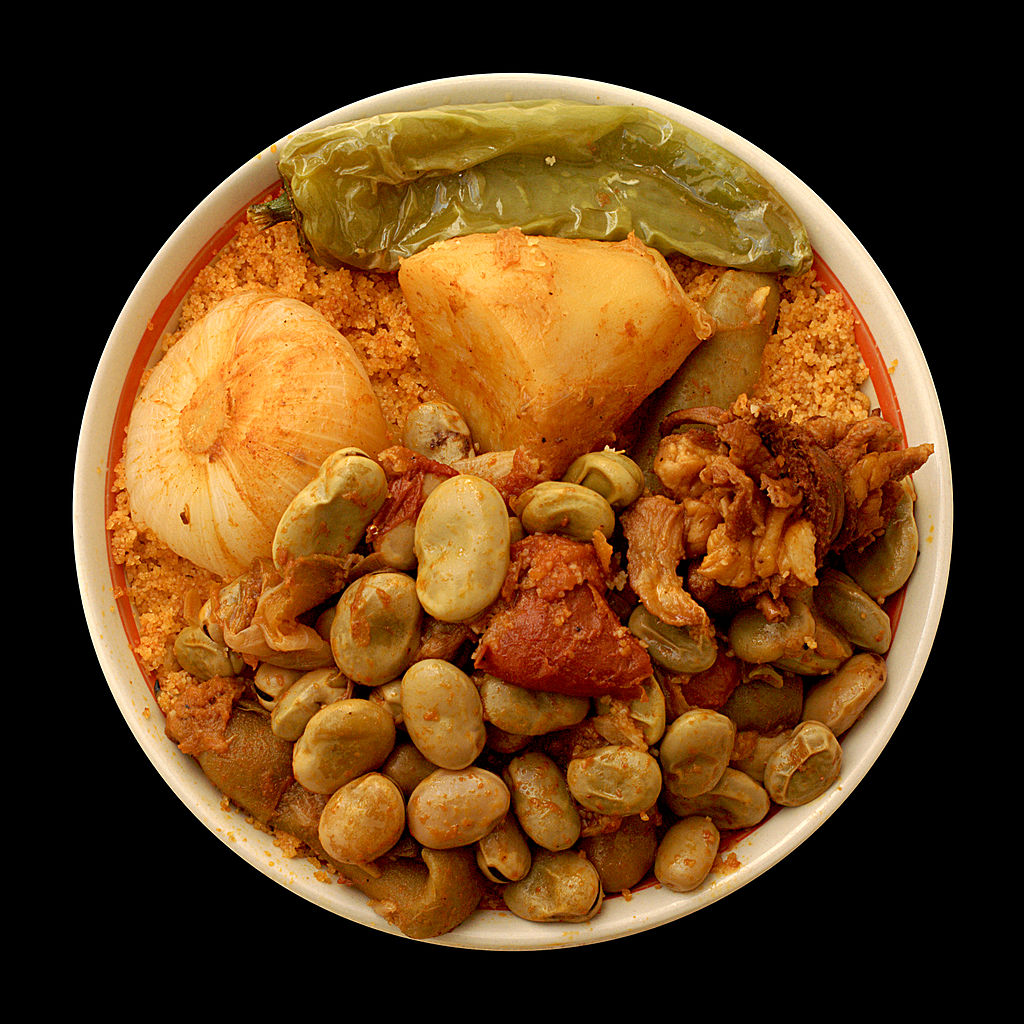
Couscous. الحبيب مهنيD Y O L F 77Photo by:Habib M’henniCamera:Nikon D310014.2 MegapixelsThis file has annotations. Move the mouse pointer over the image to see them.This photograph was made by Habib M’henni (User:Dyolf77) and released under the license(s) stated above.You are free to use it for any purpose as long as you credit me and follow the terms of the license.English: Credits to Habib M’henni / Wikimedia CommonsFrançais : Crédits à Habib M’henni / Wikimedia Commonsالعربية : بترخيص الحبيب مهني / ويكيميديا كومنزIf you use this image outside of the Wikimedia projects,I would be happy to hear from you by ( habib.mhenni gmail.com ). Thanks!Note: This file has been released under a license which is incompatible with Facebook’s licensing terms. It is not allowed to upload this file to Facebook. Other files from me can be found in Category:Files by User:Dyolf77, CC BY-SA 3.0, via Wikimedia Commons
Tunisian sweets
A tray of Tunisian pastries. There are certain types of pastries:
- 1st row from the left: Kâak ourka made from marzipan of two types (one is floured with powdered sugar)
- 5th row from left: Baklawa
- 1st row from the right: Ghraiba of chickpeas
- The other rows are made up of pastries made with almonds or pistachios. All these pastries are homemade, except for the baklawas.
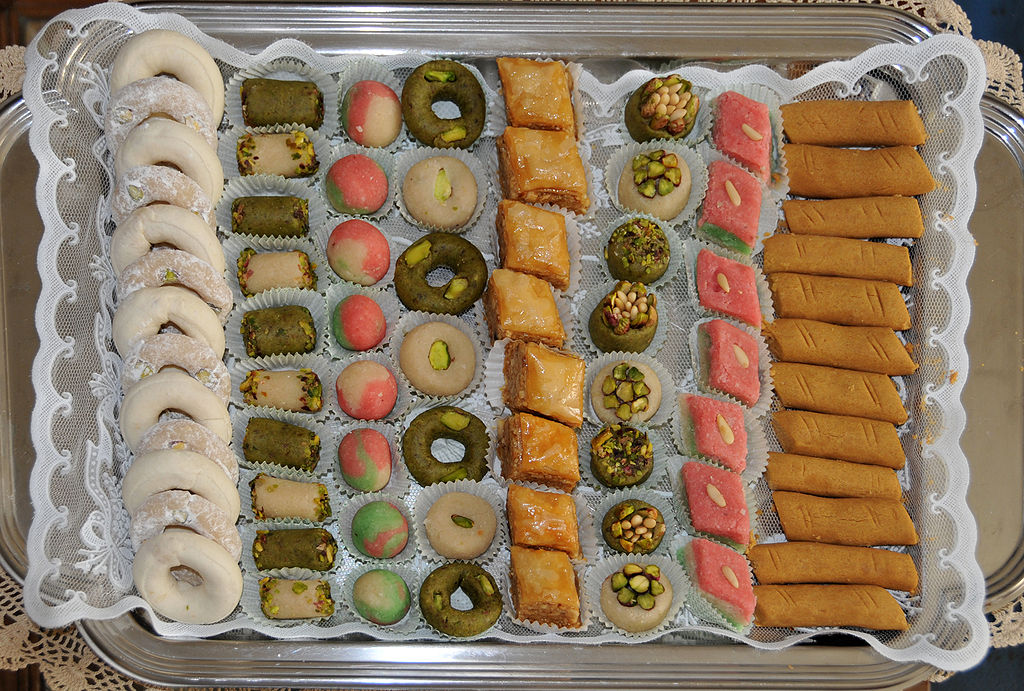
Tunisian sweets. Citizen59, CC BY-SA 3.0, via Wikimedia Commons
Sources: PinterPandai, Planet Ware, Tripzaza, Britannica
Credit photo (main picture): Mohamed Moslem Mosbah (CC BY-SA 3.0) via Wikimedia Common
Main photo description: beautiful café”Sidi Cobaan” in Sidi Bou Said with one of the best views in the world 🙂
